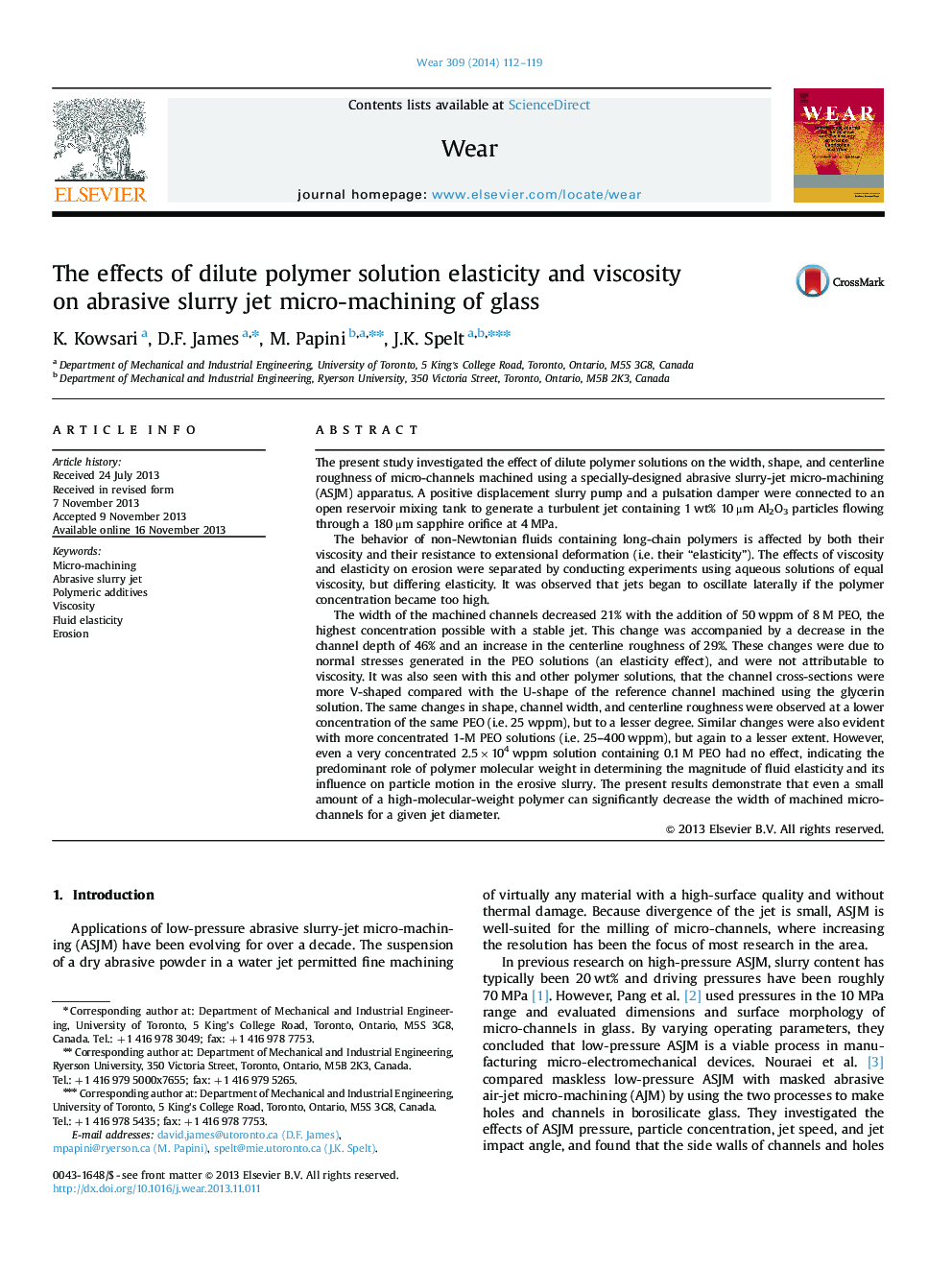| Article ID | Journal | Published Year | Pages | File Type |
|---|---|---|---|---|
| 7004544 | Wear | 2014 | 8 Pages |
Abstract
The width of the machined channels decreased 21% with the addition of 50Â wppm of 8Â M PEO, the highest concentration possible with a stable jet. This change was accompanied by a decrease in the channel depth of 46% and an increase in the centerline roughness of 29%. These changes were due to normal stresses generated in the PEO solutions (an elasticity effect), and were not attributable to viscosity. It was also seen with this and other polymer solutions, that the channel cross-sections were more V-shaped compared with the U-shape of the reference channel machined using the glycerin solution. The same changes in shape, channel width, and centerline roughness were observed at a lower concentration of the same PEO (i.e. 25Â wppm), but to a lesser degree. Similar changes were also evident with more concentrated 1-M PEO solutions (i.e. 25-400Â wppm), but again to a lesser extent. However, even a very concentrated 2.5Ã104Â wppm solution containing 0.1Â M PEO had no effect, indicating the predominant role of polymer molecular weight in determining the magnitude of fluid elasticity and its influence on particle motion in the erosive slurry. The present results demonstrate that even a small amount of a high-molecular-weight polymer can significantly decrease the width of machined micro-channels for a given jet diameter.
Related Topics
Physical Sciences and Engineering
Chemical Engineering
Colloid and Surface Chemistry
Authors
K. Kowsari, D.F. James, M. Papini, J.K. Spelt,
